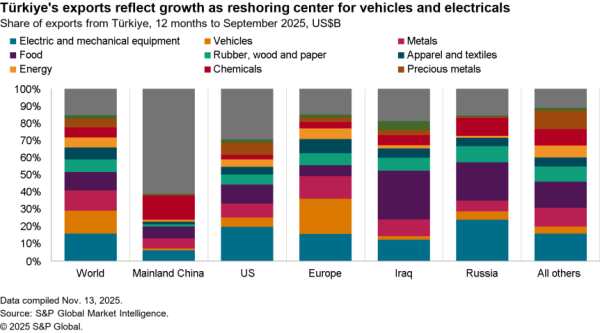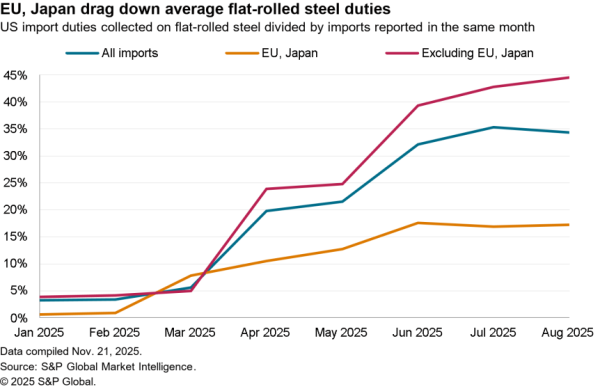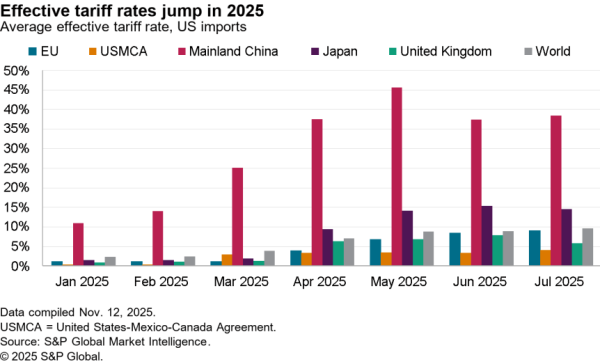The Biden administration has published proposals for a new infrastructure bill (“The American Jobs Act”) allocates significant quantities of funding that will assist the logistics sector and manufacturing. There is $115 billion of spending proposed for roads which will help smooth truck transportation, $80 billion for rails including specific mentions of freight, $25 billion for airports including intermodal facilities and $17 billion for inland waterways and land ports of entry.
On the supply chain side there is spending allocated to encourage onshoring. The spending will put some heft behind the plans to come out of the review of critical supply chains due to be published in early June, as discussed in Panjiva’s research of Feb. 26. That includes $50 billion for Commerce for “monitoring domestic industrial capacity and funding investments to support production of critical goods” as well as $50 billion to be specifically focused on semiconductors.
The money could prove transformative if leveraged by private capital but will take an extended period to arrive. The proposals figures are based on 10 years of spending, the majority of which will be applied over the next eight years. Even before that though there’s likely to be months of negotiations to pass a bill in Congress with implementation processes to follow after that. It seems unlikely that dollars will be spent before 2022.
Within the critical supply chain review’s four product areas – semiconductors, pharma ingredients, large batteries and critical minerals – it is semiconductors that are likely the most reliant on private company actions with the government having little to offer beyond investment support.
At the global level the production and export of semiconductors appears fragmented, with the top eight countries plus Europe accounting for 75.2% of exports and the largest being South Korea with a 14.5% share in 2019, Panjiva’s data shows. The proportional shares have also been fairly constant in the past four years with the most notable change being increases in share of Malaysia and China to 11.7% and 11.2% respectively from just over 10% in 2016.

Source: Panjiva
Within specific semiconductor types though there can be individual countries that dominate exports, including South Korea and China in the case of memory chips with a share of 34.1% and 17.3% respectively. In the case of processors Malaysia has become more dominant with a 20.2% share while China leads semiconductor components with an 18.7% share. The availability of semiconductors from natural U.S. allies is unlikely to satisfy the Biden administration’s strategic aims.

Source: Panjiva
The scale of the challenge in semiconductors shouldn’t be underestimated. The sector that has been most heavily impacted in the U.S. is the automotive industry, with most automakers including Stellantis and Honda cutting production while GM and Ford have also opted to reduce the semiconductor content of their vehicles by removing features.
Other sectors are also feeling pressure including Whirlpool in the consumer appliances sector and Asustek in computing. Shortages may lead to higher costs which when added to a recent surge in memory chip prices, reported by Nikkei, could lead to higher consumer costs even if supplies can be maintained. The fire at Renesas’s factory in Japan provides a reminder that industrial accidents are also a factor that have to be planned for.
One sign of the challenges faced is that U.S. imports of semiconductors have barely recovered from pre-pandemic levels, with total shipments down by 3.6% year over year in January after a similar drop in Q4’20. There’s also a continued downturn in imports of amplifiers and memory chips of 51.1% and 42.1% year over year in January.
Somewhat concerningly for U.S. manufacturers is that shipments of components are also still in decline with a 23.4% slide in January after a 7.1% improvement in Q4’20. One bright spot is that processors have increased by 3.8% in January after declining by 4.7% in Q4’20.

Source: Panjiva
The $50 billion of proposed funding already has some potential targets, as well as stiff international competition. Intel already plans to invest $20 billion to build two new fabricating facilities (“fabs”) in Arizona as part of its “Integrated Device Manufacturing 2.0” strategy plan. That was launched before the Biden infrastructure plan and so may not require additional funding.
TSMC meanwhile has global plans to invest around $100 billion over the next three years, according to Reuters, with $12 billion already dedicated to building a new fab in the United States. However, the firm has noted that countries’ attempts to “to bring a full supply chain back and try to be fully self-reliant is totally not efficient“, Nikkei reports the firm’s Chairman, Mark Liu, as saying.
The international competition is formidable. China’s 14th Five Year Plan, recently passed by the National People’s Congress, is very much structured towards building technology independence and brings a whole-of-government focus to plans that will be outlined this year to run through 2035.
The Indian government is also reportedly offering a $1 billion cash incentive to manufacturers who produce semiconductors there, Reuters reports, which fits with the existing “Make in India” strategy.
The Japanese government meanwhile has a wider advanced chipmaking project including Canon and Tokyo Electron which will include around 42 billion yen ($380 million) of R&D funding from the government.
Capital investment activity in the U.S. semiconductor sector has slowed markedly recently with imports of semiconductor machinery and parts down by 21.4% year over year in the three months to Jan. 31 and by 24.4% versus the same period of 2019. The slowdown has included a 20.2% decline in U.S. seaborne imports linked to Intel in Q1’21 while those associated with Applied Materials increased by 4.2%.
There’s also the question of equipment sourcing. In the 12 months to Jan. 31, Japan accounted for 37.1% of sourcing while the EU, U.K. and Switzerland accounted for 31.3%. Imports from China have been increasing despite the application of tariffs, rising by 23.1% year over year in the past three months but only representing 7.4% of the total in the past 12 months.

Source: Panjiva




